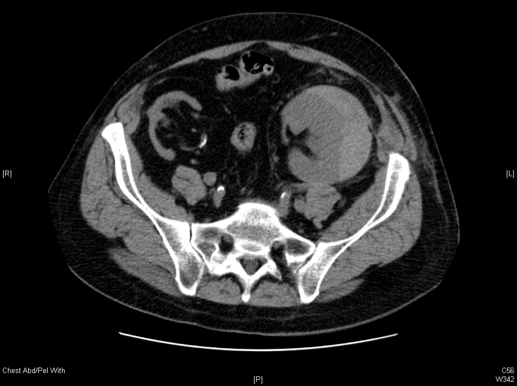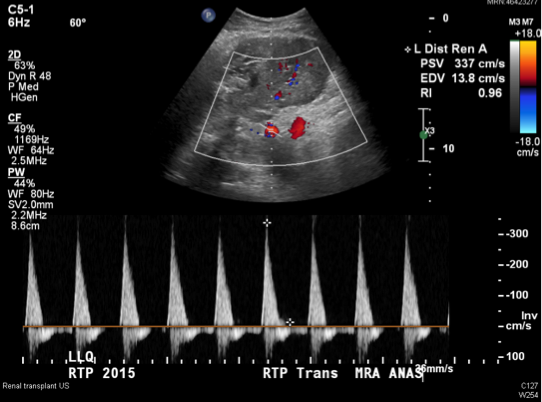Page Kidney Phenomenon in a Trauma Patient: A Case Report and Recommendations for Management
University of Texas Health Science Center at Houston, Houston, TX
Meeting: 2019 American Transplant Congress
Abstract number: D29
Keywords: Edema, Graft survival, Hypertension, Safety
Session Information
Session Name: Poster Session D: Quality Assurance Process Improvement & Regulatory Issues
Session Type: Poster Session
Date: Tuesday, June 4, 2019
Session Time: 6:00pm-7:00pm
 Presentation Time: 6:00pm-7:00pm
Presentation Time: 6:00pm-7:00pm
Location: Hall C & D
*Purpose: Unintentional injuries result in over 30 million emergency room visits annually in the United States. With almost 20 thousand renal transplants performed in 2017, and an estimated 100 thousand patients with functioning renal transplants alive in the United States, it is likely that hospitals will encounter trauma patients with renal allografts. Timely expert management for these patients can save organs that would otherwise be lost.
*Methods: We present a 60 year old male transferred to a level 1 trauma center 13 hours after a motor vehicle collision. The initial trauma evaluation revealed cervical spine, rib, and patellar fractures, and a subcapsular hematoma of his transplant kidney (figure 1). He was alert and oriented with normal blood pressure, normal urine output, but an elevated creatinine of 2.1 mg/dl (baseline 1.1mg/dl). Transplant surgery was consulted and his creatinine rose to 2.8mg/dl despite fluid resuscitation. Doppler ultrasound revealed reduced arterial blood flow to the allograft (figure 2), and he was taken emergently to the operating room for evacuation of the hematoma. On post-operative day 1 his creatinine improved to 1.3mg/dl, and to 0.8mg/dl on post-operative day 2.
*Results: $$graphic 1
Figure 1- Acute subcapsular hematoma in renal allograft
$$graphic 2
Figure 2 – Elevated renal artery peak systolic velocity and resistive index
*Conclusions: Page kidney phenomenon arises from compression of renal parenchyma by a subcapsular hematoma. Hypertension, oliguria, and renal dysfunction are the most common presenting sequelae, with decompression of the hematoma being the treatment of choice in the transplant population. Prompt recognition and management in the trauma setting requires a high index of suspicion as signs of allograft compromise can be assigned to other causes.
To cite this abstract in AMA style:
Estrada MM, Hall DR, Dar W, Bynon JS. Page Kidney Phenomenon in a Trauma Patient: A Case Report and Recommendations for Management [abstract]. Am J Transplant. 2019; 19 (suppl 3). https://atcmeetingabstracts.com/abstract/page-kidney-phenomenon-in-a-trauma-patient-a-case-report-and-recommendations-for-management/. Accessed December 19, 2025.« Back to 2019 American Transplant Congress


